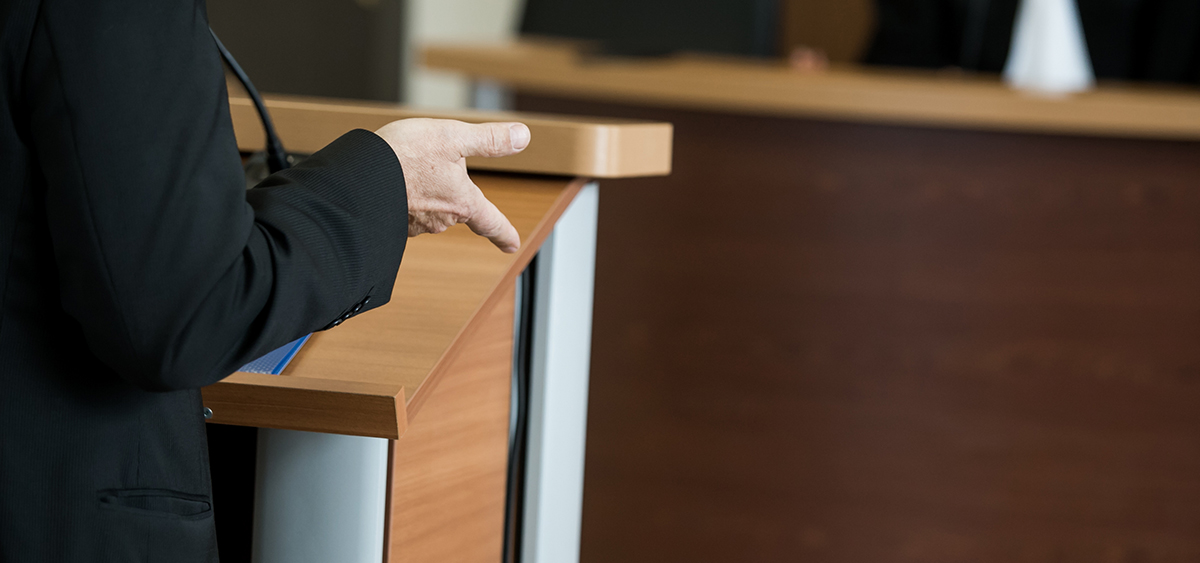In the Canadian justice system, a person who has been the victim of a crime doesn’t always testify at the accused’s trial. But the prosecutor can decide that the victim’s testimony is necessary to help prove the accused committed the crime. This article explains the steps for testifying.

Summons to testify
A crime victim who is called to testify will receive a summons, also called a subpoena. This document tells the victim what day and time to go to court. It also gives the courtroom number.
The summons orders the person to testify. In some cases, the judge can take steps to force the victim to testify, if they are refusing to do so.
If exceptional circumstances prevent the victim from going to court that day, the victim should contact the criminal and penal prosecuting attorney before the trial to ask to be excused from court. The criminal and penal prosecuting attorney is also called the prosecutor or Crown prosecutor.
Employers must give employees time off to testify. They can’t punish them for being called to testify.
Getting help with testifying
Victims who must testify can get help from organizations such as a Crime Victims Assistance Centre (CAVAC) or a Sexual Assault Centre (CALACS).
A victim can also ask the prosecutor to talk to the judge about special arrangements to make testifying easier. The judge considers each request on a case-by-case basis.
For example, a victim can ask to:
- have a trusted person beside them while they testify,
- testify behind a screen,
- keep members of the public out of the courtroom,
- forbid the publication of information that would identify the victim.
A case worker or person close to the victim can also accompany the victim on the day of the trial. The judge can even allow the presence of a support dog.
If the court authorizes it, the victim can also testify from outside the courtroom by video. In this case, they go to a room in the courthouse equipped with videoconferencing, enabling the court and the accused to see and hear the victim’s testimony live.
Testifying remotely
In some cases, the victim can testify remotely, by a conference call, or by videoconference. The court may accept this request for various reasons, for example:
- the victim lives far away or in another country
- the victim can’t come to the courthouse due to a serious reason such as a health problem or a disability
A judge is more likely to allow remote testimony if the victim’s testimony is short. In addition, the victim must be able to testify in a quiet and private place, such as a closed office.
The victim can discuss this option with the prosecutor to see if it’s possible.
What happens at the trial?
On the day of the trial, the victim must go to court at the time and place shown on the summons. There’s usually a room reserved for victims. Most of the time the prosecutor meets victims in this room and takes them to the courtroom. Victims must sometimes wait outside the courtroom for their turn to testify.
When testifying, the victim must do the following things:
- take an oath or solemnly state to tell the truth,
- stand in front of the judge while testifying and look at the judge,
- answer all the questions (usually), even if it’s difficult
Victims must tell the judge everything they know about what happened, even if they feel they are repeating what they said earlier to the police or the prosecutor.
The stages of testimony
There are three important stages of testimony:
Examination
The prosecutor is the first lawyer to ask questions. Usually, the prosecutor asks the witness to explain what happened.
Cross-examination
The lawyer for the accused then asks the witness questions. Accused people who don’t have a lawyer can ask the questions themselves if the witness is 18 years or older. The main purpose of cross-examination is to find out whether the witness is telling the truth and to poke holes in the testimony.
In some cases, defendants who don’t have a lawyer are not allowed to question the victim directly. Instead, the court appoints a lawyer to handle the cross-examination.
This rule applies to cases involving sexual assault, criminal harassment, and cases in which the victim is a minor. In other situations, victims and witnesses can request this protection from the court. The judge makes the decision based on factors such as the age of the witness, their relationship with the accused person, the safety of the person testifying, and the nature of the crime.
Re-examination
The prosecutor can ask additional questions if necessary. The goal of re-examination is to enable the witness to correct or explain what they said during cross-examination.
Testimony of a sexual assault victim
In a criminal or civil sexual assault trial, the accused or the accused’s lawyer is forbidden to perpetuate myths or prejudices regarding victims of sexual assault. Therefore, they can’t ask questions about the victim’s past sexual history.
Please note!A specialized court for sexual and domestic violence is currently being created in Quebec. To learn more, see Justice Quebec’s website (French version available only). If you are experiencing sexual or domestic violence, see our list of resources that can help. |
After testifying
Victims can usually leave the courthouse right after they testify, if the judge gives them permission.
Before leaving, the victim might have to go to the clerk’s office in the courthouse to pick up an indemnity (amount of money) for the time spent in court. In some cases, the victim can get other costs, including transportation, meals and accommodations. It’s important to keep receipts.





